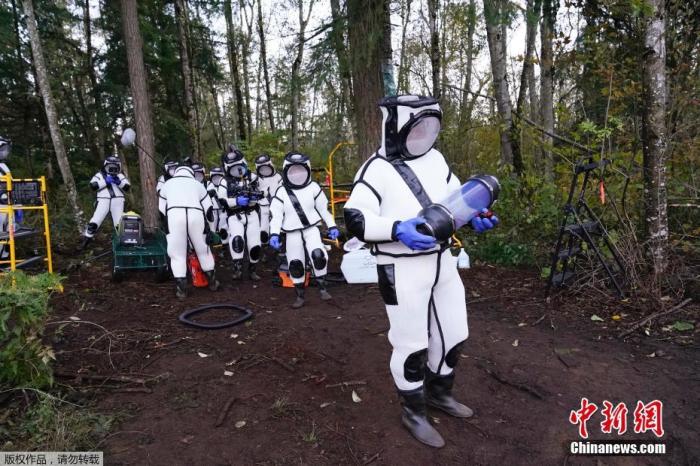China News Service, October 26th, a comprehensive report. On the 24th local time, in Blaine Township, Washington, a group of agricultural staff wearing full-body protective equipment successfully eradicated the "killer bumblebee" hive on a tree. .
This is the first "killer bumblebee" hive found in the United States.
In Washington State, the United States, a team of entomologists discovered a bumblebee nest. Team members were fully armed to hunt down this "killer bee" that can kill people.
According to reports, on October 22, entomologists from the Washington State Department of Agriculture discovered the first "killer bumblebee" nest in the town of Blaine in the state.
The hive they found was about the size of a basketball and contained 100 to 200 bumblebees.
On October 24, the staff in protective clothing sucked the bumblebee from the hive into the jar. The protective clothing can prevent the bumblebee from stabbing the staff with a sting about 6 mm long.
In addition, the staff wear face masks to prevent the hornet from spraying venom into their eyes.
The Washington State Department of Agriculture said in a brief statement that the operation "seems to be very successful."
But officials suspect that there may be more nests in the area and will continue to look for them.
The Department of Agriculture plans to hold a press conference on the 26th to introduce the specific situation.
In Washington State, the United States, a team of entomologists discovered a bumblebee nest. Team members were fully armed to hunt down this "killer bee" that can kill people.
According to previous reports, the "killer bumblebee" was first discovered in Washington State in December 2019. It is a non-U.S. invasive species and the largest 2-inch hornet in the world. It feeds on bees and other insects. The biggest threat is the devastating damage to ordinary bee colonies.
Despite the name "killing bumblebees", they kill up to dozens of people in Asia each year.
According to reports, US Department of Agriculture researchers used radio trackers to mark several captured "killer bumblebees" and use them to find the hive.
According to reports, "killer bumblebees" usually build nests on the ground, but occasionally they also build nests in the trunks of dead trees.

